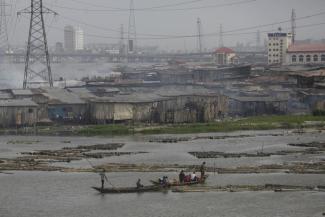Editorial
Ambition is needed

Romer’s model is Shenzhen in China. This city is located between Guangzhou and Hong Kong, and was still a small fishermen’s village a few decades ago. The government declared it a special economic zone in 1979, and today the city has more than 10 million inhabitants with an annual per-capita GDP of about $ 22,000. If humanity built many agglomerations of this kind, poverty would be vastly reduced, Romer says (see interview in D+C/E+Z 2010/06, p. 260).
Alas, it is not easy to create something like Shenzhen. China’s authoritarian regime was not only determined to make Shenzhen a success, it was also unusually disciplined about doing so. Most dictatorships only serve top leaders to enrich themselves. The public interest and people’s rights are normally in better hands where governments are elected. Indeed, China’s gleaming downtowns make invisible the plight of those who were evicted for the sake of turning old urban centres into 21st century hubs. Democracy, on the other hand, means that large-scale plans always trigger opposition. Whether under despotic or democratic rule: most megacities develop in an incremental and largely unplanned way.
Many Germans feel that urban life is to stroll down Berlin’s Unter den Linden, the Sunset Boulevard in Los Angeles or perhaps Shanghai’s Bund. However, a quarter of humankind’s urban people live in slums – and to the people concerned, city life means constant fear of eventual eviction, getting stuck in the mud in the rainy season and exposure to infectious diseases because neither drinking water supply nor sanitation meet minimum standards. Simple things matter. Most Germans have no idea of how dangerous it is to live in a neighbourhood without proper street lights.
Urban poverty is a huge issue. Most slum dwellers lack public services, including electric power, health care and schools. Town planners often consider informal settlements a problem. They tend to either neglect them or plan evictions. The people who live there, however, need a place to stay and they have no alternative. Attempts to drive them away compound issues of social justice and violate human rights. As more and more people move to cities because they cannot find livelihoods in the rural areas they come from, the need to make cities inclusive will become increasingly urgent.
Today, about 3.5 billion people live in cities, and the number is set to double in the next few decades. Our urban infrastructure must therefore double in the span of one human generation. The challenge is huge. For simple environmental reasons, moreover, innovative approaches are needed. If we care about climate protection, we cannot keep using energy-intensive building materials such as steel, aluminium and concrete in the amounts that have seemed normal so far.
In October, Habitat III, a UN conference, adopted a new Urban Agenda in Ecuador. Among other things, it includes that everyone, including the poor, has a right to urban amenities. Nation states and municipal authorities must now implement the agenda ambitiously. Further urbanisation is inevitable, and it must be done intelligently.
Hans Dembowski is editor in chief of D+C Development and Cooperation / E+Z Entwicklung und Zusammenarbeit.
euz.editor@fs-medien.de















